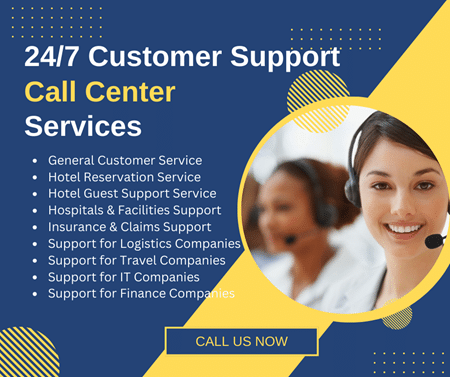Are you struggling to fulfill the skill gap in your organization? Is the lack of an experienced and reliable workforce holding you back from pursuing new opportunities? Or managing your contingent workforce has left you overwhelmed?
If you replied with an empathetic yes to any of the above questions, your organization is a prime use case for leveraging solutions like VMS and MSP.
Staffing your workforce with skilled talent can be a persistent challenge. A contingent workforce takes center stage as employees want flexibility and companies want to derive business value for their money.
Keeping up with evolving technology is another challenge. Organizations must keep their IT systems available and secure and keep up with innovations while maintaining optimal performance.
To overcome these challenges, you can move to a vendor model or outsource your IT needs to an MSP.
VMS and MSP offer benefits like procurement and management of the contingent workforce. Let us look at the differences between these solutions. We also understand how to pick the right solution for your business.
This article will guide you through:
Vendor Management System (VMS)
VMS is a software system that provides complete visibility over your external workforce. It offers a centralized platform to view, schedule, manage, invoice, and track performance if you work with many vendors.
VMS facilitates the entire lifecycle of a contract-based worker. For example, HRs or hiring managers can view profiles, negotiate contracts, onboard, assess, and generate invoices and off board. The system also collects data, studies, and automates essential staffing services.
Some core features of a VMS are:
- Vendor management
- Requisition management
- Invoice management
- Integrated performance tracking
- Reporting tools
- Risk mitigation
Benefits Offered by Vendor Management System
Contingent workforce management is the strongest suit of a VMS. Here is how you can benefit from this solution.
- Centralized view of third-party suppliers and staffing agencies
- Enhanced reporting capabilities combined with analytics
- Helps HRs, hiring managers and other stakeholders make informed decisions
- Improved collaboration among teams
- Improved performance and efficiency with automated transactions
- Reducing operational costs
Managed Service Provider (MSP)
A managed service provider is a third-party provider that offers an array of IT services. These include MSP help desk services, IT infrastructure maintenance, and end-to-end contingent workforce management. Apart from vendor management, an MSP can also help meet operational goals like system availability, automation, risk management, and security.
You can outsource a part or the entire external workforce management process with MSPs. Once outsourced, the service provider handles tasks like initiating vendor engagement, hiring skilled employees, negotiating contracts, planning, and off boarding.
Some core features of an MSP are:
- Remote management of IT infrastructure
- Candidate marketing
- Payroll management
- Application management
- Maintaining talent pool for future needs
- Automation of repetitive tasks
Benefits Offered by Managed Service Provider
MSPs provide a host of services that ensure maximum uptime and improve productivity using state-of-the-art technology. Here are some benefits offered by an MSP.
- Customizable solutions depending on an organization’s workforce and operational need
- Access to technical expertise and skilled resources
- Predictable and lower IT costs
- Employee retention and continuous learning
- Quick response time
- Lets you focus on core business tasks
What is the Difference Between a VMS and MSP?
An integral difference between VMS and MSP is the type of support offered. For example, VMS provides a software mechanism that you can leverage to manage the vendors and third-party suppliers you work with. It is a user-friendly solution that is backed by technology.
The solutions offered by an MSP are also backed by technology but with the inclusion of human expertise.
For example, a vendor management system offers your HR department the tools and information to manage contract and external workers. Features like in-depth reporting, payment integration, streamlined recruitment processes, and vendor-neutral solutions help your in-house team fulfill its responsibilities efficiently.
A managed service provider can own a part or the complete functionality of the HR department. So organizations can outsource processes like recruitment, contract setup, data recording, and management.
To summarize, VMS is a software technology that brings staffing and vendor transactions online. MSP is a third-party service provider that takes complete ownership of staffing transactions.
VMS vs MSP - How to Choose the Right Solution?
Today, workers look for more flexibility, work-life balance, and better compensation. Organizations need to identify this shift and have systems in place to recruit and manage the right contingent talent.
According to Staffing Industry Analysts, in 2021, there were 52 million contingent workers in the US alone. Temporary staffing is a trend that is here to stay. Tech companies running with 40% to 50% contingent workers are prime examples of the trend.
The right solution depends on your business need. For example, if you are a hands-on organization that wants to deal with vendors and manage the staffing process, vendor system management will be the right fit.
If hiring the right candidate for open positions is relatively easy, and you prefer working with a specific set of vendors, VMS is what you should opt for.
If your HR department is overworked or finding it difficult to fill open positions, then managed service provider will be the right fit. Recruitment is an effort-intensive task. If your HR team is short-staffed, outsourcing can free up critical resources and make external workforce management seamless.
Can VMS and MSP be Combined?
Yes, you can combine VMS technology and MSP expertise to meet organizational goals. For example, depending on the third-party service provider you choose, they might already have an integrated platform for staffing. Or they could own the technical expertise to make the most of your existing technology.
You could invest in a VMS to streamline the recruitment process. Then, as you scale, you can cut back on training costs and maintaining a dedicated team. Instead, you can use the technical capabilities of the managed service provider to leverage the VMS tool and reduce costs.a
Summary
Organizations need to prepare themselves to respond to the shift in workplace dynamics. VMS and MSP are both solutions that can make external workforce management a seamless process.
A vendor management system is backed by technology. It is suitable for organizations wanting control and visibility over the contingent workforce.
A managed service provider is backed by technology and human expertise. It is suitable for organizations wanting to outsource HR processes while they focus on core deliverables.
Both offerings have a range of benefits, but the right solution depends on your business need and goals.







